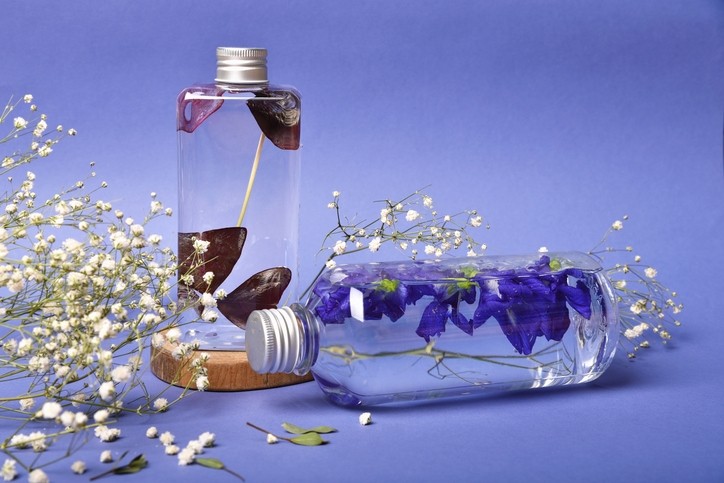
The world of fragrances and perfumes is a harmonious blend of artistry and chemistry. These scents have the power to evoke emotions, trigger memories, and enhance one’s personal aura. In this comprehensive article, we will explore the intricate process of creating fragrances, delve into the science behind the captivating scents, and provide detailed information on the chemicals and ingredients that make perfumes a sensory masterpiece.
Introduction: The Magic of Fragrances
Fragrances have been an essential part of human culture for centuries. From ancient civilizations to modern times, the art of perfumery has evolved, combining nature’s wonders with scientific innovation. Perfumes are not just scents; they are expressions of personality, emotion, and identity. To appreciate the craftsmanship behind these captivating scents, we must first understand the intricate process of creating fragrances.
The Perfume-Making Process
Perfume creation is a complex and artistic process that involves several key stages, from sourcing raw materials to blending the final product. The primary steps include:
1. Raw Material Sourcing
The foundation of any perfume lies in its raw materials, which can be natural, synthetic, or a combination of both.
Natural Ingredients
These include essential oils derived from plant sources like flowers, fruits, leaves, and woods. Examples are rose oil, bergamot oil, and sandalwood oil.
Synthetic Ingredients
Synthetic chemicals are created in laboratories to mimic natural scents. Common synthetics include vanillin (vanilla scent) and coumarin (sweet hay scent).
The sourcing of these raw materials is a crucial step in the creation of a fragrance. Perfumers select and combine these ingredients to achieve a specific scent profile.
2. Extraction and Distillation
The raw materials undergo extraction and distillation to obtain essential oils or absolutes. This is a pivotal stage in the perfume-making process and requires specialised techniques.
Steam Distillation
Steam distillation is the preferred method for plants with essential oil-containing glands. It involves passing steam through the plant material, capturing the volatile compounds. For example, this method is used to extract the essential oil from lavender.
Solvent Extraction
Solvent extraction is used for delicate flowers like jasmine and tuberose. A solvent dissolves the essential oils from the plant material, which is then evaporated to obtain the pure essence. This process is often employed for flowers with delicate volatile compounds.
Enfleurage
Enfleurage is a traditional method used in the extraction of scents from highly fragile flowers. Flower petals are spread over a layer of fat, which captures the scent. The fat is later dissolved in alcohol to extract the perfume’s essence. This method is rarely used today due to its labour-intensive nature.
3. Blending and Perfume Notes
Perfumes are typically composed of three types of notes that unfold over time:
Top Notes
These are the initial, fleeting scents that you smell when you first apply the perfume. They include fresh and light scents like citrus and herbs. Top notes are crucial for creating a positive first impression when someone first applies a fragrance.
Middle Notes (Heart Notes)
These emerge after the top notes fade and form the main body of the perfume. Floral and spicy scents are common middle notes. The heart notes create the character of the fragrance and play a significant role in its overall profile.
Base Notes
Base notes are the deep, long-lasting scents that become more prominent as the perfume dries down. Examples include woody, earthy, and musky notes. These base notes provide a foundation for the fragrance and give it lasting power.
The art of blending these notes to create a balanced, harmonious scent is where the expertise and creativity of perfumers shine. The selection of essential oils and their precise proportions in each category is an art form in itself.
4. Fixatives and Dilution
Fixatives are substances added to perfumes to slow down the evaporation of the fragrance, ensuring the scent lasts longer. Common fixatives include benzoin, frankincense, and myrrh. These fixatives can also impart their unique scents to the final fragrance, contributing to the complexity of the scent.
Dilution is the process of blending essential oils or absolutes with alcohol or carrier oil to achieve the desired concentration and balance. Perfumers carefully calculate the dilution ratio to ensure that the fragrance is not too concentrated, which can be overpowering, or too diluted, which results in a weak scent.
5. Aging and Maturation
Perfumes are allowed to mature and age after blending. This is an essential step in the creation of high-quality fragrances. The ageing process allows the various scent components to harmonise, resulting in a well-balanced and nuanced fragrance. The duration of maturation varies depending on the formula and the desired outcome, but it can last from several weeks to several months. During this period, the scent continues to evolve and improve.
6. Quality Control
Throughout the entire process, quality control is crucial to ensure consistency, scent accuracy, and adherence to safety and regulatory standards. Quality control checks may involve olfactory assessments, chemical analysis, and testing for skin sensitivity.
The Chemistry of Scents: Chemical Components
Understanding the science behind fragrances requires exploring the chemical components that give each scent its unique character. Here are some essential chemicals commonly found in fragrances:
1. Aldehydes
Aldehydes are organic compounds responsible for creating a clean, soapy, or citrusy scent. They are characterised by the presence of a carbonyl group (C=O) and are found in both natural and synthetic fragrances. The famous Chanel No. 5 perfume is known for its aldehyde-rich composition. One well-known aldehyde is hexanal, which contributes a green, grassy note.
2. Esters
Esters are organic compounds formed by the reaction between an alcohol and an organic acid. They produce sweet, fruity, and often floral scents. For example, isoamyl acetate is responsible for the aroma of ripe bananas, while ethyl acetate contributes to the scent of apples. Esters are widely used in perfumery to create fruit and floral notes.
3. Terpenes
Terpenes are a large and diverse class of natural compounds found in plant resins and essential oils. They provide scents like pine, eucalyptus, and citrus. Limonene, for instance, is found in the peels of citrus fruits and imparts a fresh, zesty aroma. Pinene is another terpene, found in pine needles and conifers, which gives off a characteristic pine scent.
4. Phenols
Phenols are organic compounds that contain a hydroxyl group (-OH) attached to an aromatic ring. They impart a medicinal, antiseptic smell. One well-known phenol is thymol, found in thyme essential oil, which contributes a strong, herbal, and slightly spicy scent. Phenolic compounds are often used in fragrances for their antimicrobial properties.
5. Ketones
Ketones are organic compounds characterised by the presence of a carbonyl group (C=O) within the molecule. They create sweet and powdery scents. For instance, ionones, a group of ketones, are used in perfumery to provide a violet-like aroma. Gamma-ionone, for example, gives off a sweet, woody violet scent.
6. Alcohols
Alcohols are organic compounds with a hydroxyl group (-OH) attached to a carbon atom. They are known for their cooling, refreshing scent. Linalool, found in lavender, is an example of a terpene alcohol. It imparts a pleasant, floral, and slightly woody scent. Geraniol is another alcohol found in rose essential oil, and it contributes a sweet, rosy aroma.
7. Lactones
Lactones are cyclic esters that contribute creamy, fruity, and often coconut-like aromas. Gamma-decalactone, for instance, provides a peachy scent commonly used in peach and tropical fruit fragrances. It adds a creamy, rich note to the overall scent profile.
8. Amines
Amines are organic compounds containing a nitrogen atom bonded to hydrogen atoms. They can generate fishy or foul odours in high concentrations, but in perfumery, they are used in moderation to contribute to various scents. For example, methylamine can provide a jasmine-like aroma, while trimethylamine gives off a marine or oceanic note.
9. Alkynes
Alkynes are hydrocarbons with triple carbon-carbon bonds. They are unsaturated compounds and can produce unsaturated, often metallic smells. While they are less commonly used in perfumery, their unique properties may be harnessed to add complexity to certain fragrances.
10. Alkyl Benzenes
Alkyl benzenes are a group of aromatic hydrocarbons with a benzene ring and one or more alkyl groups (carbon chains) attached to it. Some alkyl benzenes, such as ethylbenzene, have a sweet, aromatic smell and are often used as solvents in perfumery. They can contribute to the overall scent profile of a fragrance, adding depth and character.
Each fragrance consists of a carefully selected combination of these chemicals, each playing its part in creating a unique and captivating scent. Perfumers use their knowledge of these chemicals and their olfactory skills to craft fragrances that appeal to a wide range of preferences.
Perfume Categories
Perfumes are categorised into different concentration levels, each with varying strength and longevity:
1. Eau de Cologne (EDC)
- Fragrance Concentration: 2-4%
- Scent Duration: Up to 2 hours
Eau de Cologne is the lightest and least concentrated form of fragrance, ideal for a refreshing, short-lived scent. It is often used as a body splash or in warm weather.
2. Eau de Toilette (EDT)
- Fragrance Concentration: 5-15%
- Scent Duration: 2-4 hours
Eau de Toilette is a common choice for daily wear, offering a balance between scent strength and longevity. It is suitable for most occasions and seasons.
3. Eau de Parfum (EDP)
- Fragrance Concentration: 15-20%
- Scent Duration: 4-6 hours
Eau de Parfum is stronger and longer-lasting than EDT, making it suitable for evenings or special occasions. It provides a more concentrated and luxurious scent experience.
4. Perfume (Parfum)
- Fragrance Concentration: 20-30%
- Scent Duration: 6-8 hours or more
Perfume, often referred to as Parfum, is the most concentrated form, offering an intense and long-lasting scent experience. It is best applied sparingly to pulse points and provides an all-day fragrance.
The choice of perfume concentration is a matter of personal preference and the desired effect. The higher the concentration, the longer the scent lasts, and the less product you need to apply.
Trends in Perfumery
The world of perfumery is ever-evolving, with trends and innovations emerging to meet the changing tastes of consumers. Some current trends in perfumery include:
1. Niche Fragrances
Niche fragrances are gaining popularity, often created by independent perfumers or niche fragrance houses. These fragrances offer unique, artisanal scents that cater to specific tastes and preferences. They are often characterised by their limited distribution and unconventional compositions.
2. Gender-Neutral Scents
There is a growing shift in the fragrance industry towards gender-neutral or unisex scents. This reflects changing attitudes towards traditional gender roles and expectations. Many consumers are drawn to scents that resonate with their individual preferences rather than adhering to gender-specific fragrance categories.
3. Sustainable and Natural
With increasing awareness of environmental and ethical concerns, consumers are seeking perfumes made from natural, sustainable, and ethically sourced ingredients. This trend aligns with the broader movement towards sustainability in the beauty and fragrance industry.
4. Olfactory Art
Some perfumers are exploring fragrances as an art form, pushing the boundaries of scent creation and presentation. They collaborate with artists, exhibit fragrances in galleries, and create scents that challenge conventional olfactory norms. These innovative fragrances are often abstract and conceptual, appealing to those who appreciate the artistic side of perfumery.
5. Custom Perfumes
Brands and perfumers are offering personalised, bespoke fragrances, allowing consumers to create a scent tailored to their preferences. These custom fragrances are often a collaboration between the consumer and a perfumer, resulting in a unique and one-of-a-kind scent. This trend appeals to those seeking a scent that is truly their own.
The Emotional Impact of Scents
Scents have a profound effect on our emotions and memories. Certain scents can evoke specific feelings and associations. The field of aromachology explores the psychological and emotional impact of scents. For example:
- Lavender is often associated with relaxation and tranquillity. Its calming properties have made it a popular choice in products designed for stress relief and sleep aid.
- The smell of freshly baked bread may trigger warm, nostalgic feelings, as it is often associated with home and comfort.
- The scent of a specific perfume can bring back memories of a loved one or a particular time in one’s life. This is because scent is strongly linked to memory in the brain.
This emotional connection is the essence of perfumery, where fragrances are created to evoke particular moods and sentiments. Perfumers carefully select and blend scents to create a specific emotional response, whether it’s a sense of confidence, sensuality, relaxation, or nostalgia.
The Chemistry of Perfume
The chemistry of perfume goes beyond the selection and blending of aromatic compounds; it involves a complex interaction of volatile molecules with our olfactory receptors. The key steps include:
- Olfactory Reception: When we smell a fragrance, volatile molecules bind to receptors in our nose, triggering electrical signals to the brain. These receptors are highly specific, each responding to different types of molecules.
- Perception: The brain processes these signals, creating the perception of a scent. The olfactory bulb, a structure in the brain, processes these signals, allowing us to identify and differentiate between various scents.
- Emotion and Memory: The limbic system, a set of structures in the brain, plays a significant role in how we experience and remember scents. This system is associated with emotions, memories, and behaviour. As a result, scents can trigger strong emotional responses and vivid memories.
- Personal Associations: Our individual experiences and associations with specific scents can influence how a perfume smells to us. For example, a scent associated with a happy memory may evoke positive emotions, while a scent linked to a negative experience may produce a negative reaction.
This complex interplay between volatile molecules, olfactory receptors, brain processing, and personal associations makes scent a rich and multifaceted sensory experience. Perfumers and scent designers leverage this intricate relationship to craft scents that resonate with the human psyche.
The Regulatory Landscape
The fragrance industry is subject to various regulations and standards to ensure safety, labelling, and ingredient disclosure. Regulatory agencies like the International Fragrance Association (IFRA) provide guidelines for the safe use of fragrance ingredients. IFRA sets concentration limits for specific fragrance compounds to prevent adverse reactions and sensitivities.
Additionally, organisations like the European Union’s Cosmetics Regulation mandate ingredient transparency. Under these regulations, fragrance ingredients must be listed on product labels, allowing consumers to make informed choices and identify potential allergens.
The enforcement of these regulations is essential to protect consumer safety and ensure that fragrances are produced and labelled responsibly. Perfume manufacturers and fragrance houses must adhere to these standards to maintain product quality and integrity.
Conclusion: The Elegance of Perfumery
Perfumery is a delicate blend of artistry, nature, and science. The creation of fragrances involves a symphony of chemical compounds, each playing a unique role in crafting a scent that can transport us to different times, places, and emotions. As trends in perfumery continue to evolve, and our understanding of scent and emotion deepens, we can expect to encounter ever more captivating and personalised fragrances that resonate with our individuality.
The world of perfumery is a testament to the beauty of human creativity and the artistry of nature. It is a realm where science and emotion intertwine, resulting in scents that can enchant, inspire, and leave an indelible mark on our lives.



